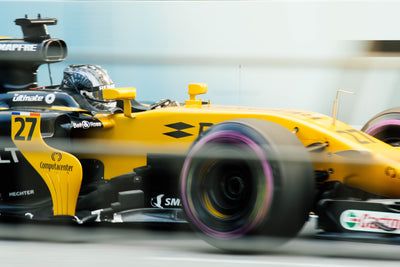- Domestic US orders.

How To Fit a Motorsport Helmet
Choosing the best fitting motorsport helmet isn’t simple. It takes a little bit of research and diligence to understand the various shapes and fits. To help you choose the best-fitting motorsport helmet, here’s a brief sizing guide.
If you’re a motorsport aficionado who likes to hit the track on the weekends, one of the most important pieces of safety equipment you could invest in is a purpose-built racing helmet. There’s no other piece of racing safety gear that offers more protection in the event of a crash.
Now, many motorsport enthusiasts prioritize appearance and price when purchasing a racing helmet. That’s the wrong approach. Your top priorities when buying a helmet should be getting one that fits perfectly and allows you to drive without affecting your ability to perform the necessary functions or inhibiting your range of motion.
That being said, choosing the best fitting helmet is not always simple. It takes a little bit of research and diligence to understand the various shapes and fits. In this motorsport helmet sizing guide, we’ll discuss some important factors to consider when buying a motorsport helmet.
Sizing a Motorsport Helmet
Measuring for motorsport helmet size is quite similar to finding a hat that fits perfectly. The only difference is how it fits over the driver’s head. A tailor’s tape measure is the best tool to measure your head size.

First, wrap the tape measure over the fullest part of your head (half an inch above your eyebrows and just above your ears). Once you have the measurement, compare it to manufacturers’ sizing chart. Now, each manufacturer will have their own sizing chart listed on their website. Here’s Bell Racing’s sizing chart.
Positioning
Once the measurements have been determined, choose the helmet size that’ closest to your measurements and try on the helmet. If your measurements fall between two sizes, round up to the larger of the two. If you use a head sock or balaclava when racing, always put it on before measuring helmet size.
How A Helmet Should Fit
When you first wear a brand new helmet, it should actually feel a little tight, but not so restrictive that it causes discomfort or pain. There should be some resistance when you put it on, but it should fit snugly. However, there shouldn’t be any “hot spots,” where the helmet is putting pressure on particular points on the face or the skull.
For instance, if the interior padding is putting too much pressure on your cheek bones, the helmet is the wrong size, however, it should also not move around. A new helmet takes a little time to “break in” and adjust to the driver’s head.
The Chin Strap
In addition to the right fit, a properly-fastened chin strap is what keeps the helmet on your head in the event of an accident. Therefore, ensure that it’s pulled up snugly against your neck and fastened securely each time you wear your helmet.
The correct way of fastening a chin strip is threading the strap’s end through both the d-rings, looping it back through the inner d-ring, and pulling it against the throat so it’s tight but doesn’t feel uncomfortable.



Fast Racer offers premium carbon fiber racing helmets from industry-leading motorsport safety manufacturers, such as Bell Racing and Stilo. Check out our collection of high-quality carbon fiber helmets to find one that suits you best.



Leave a comment